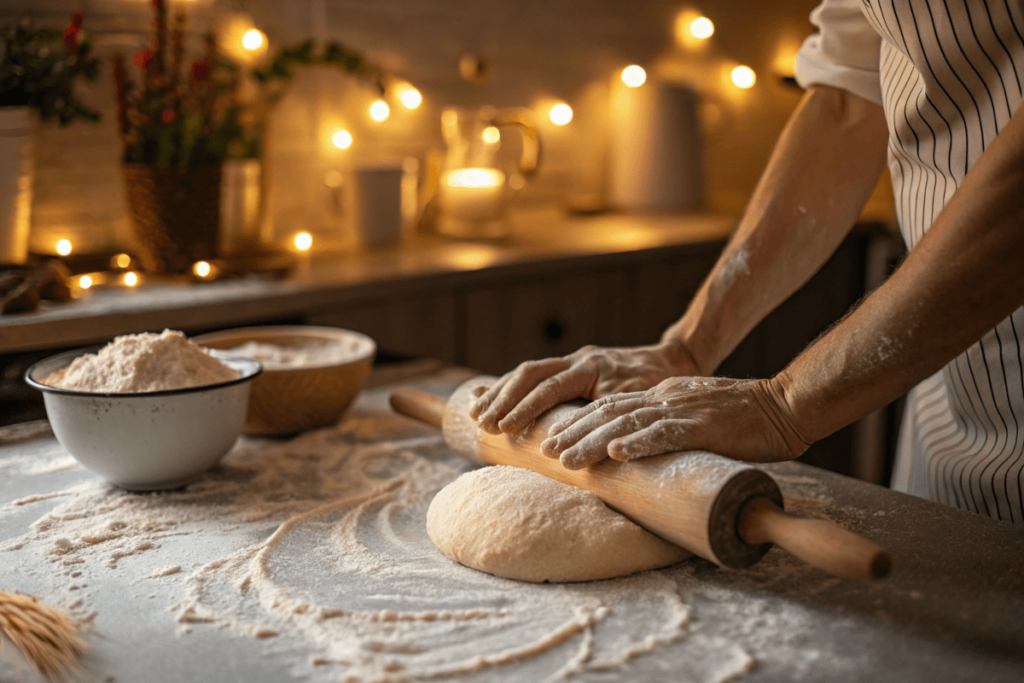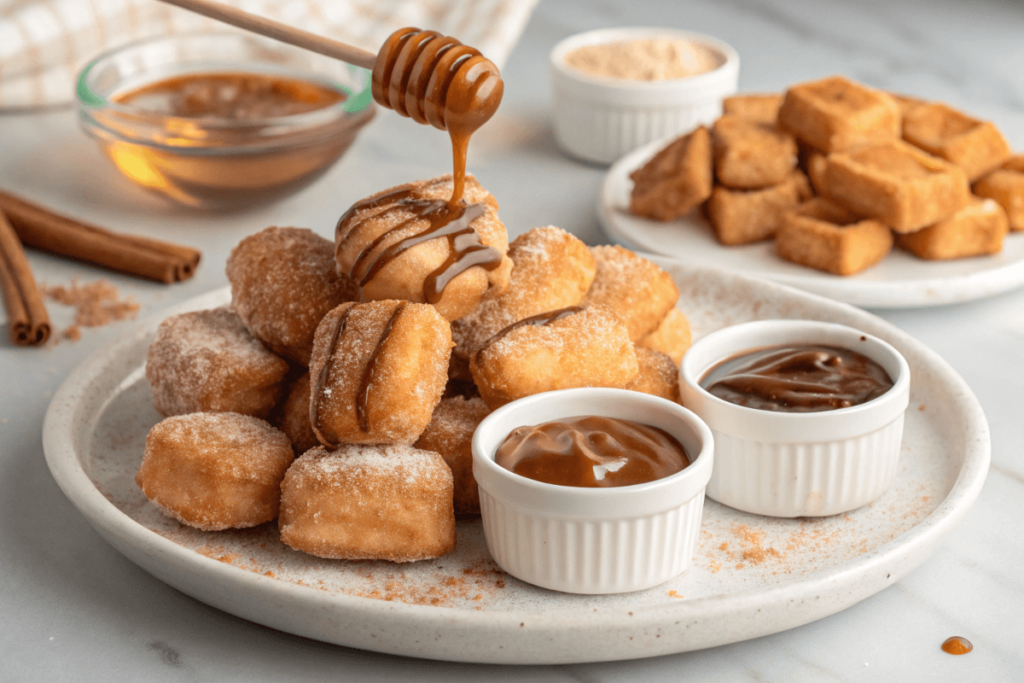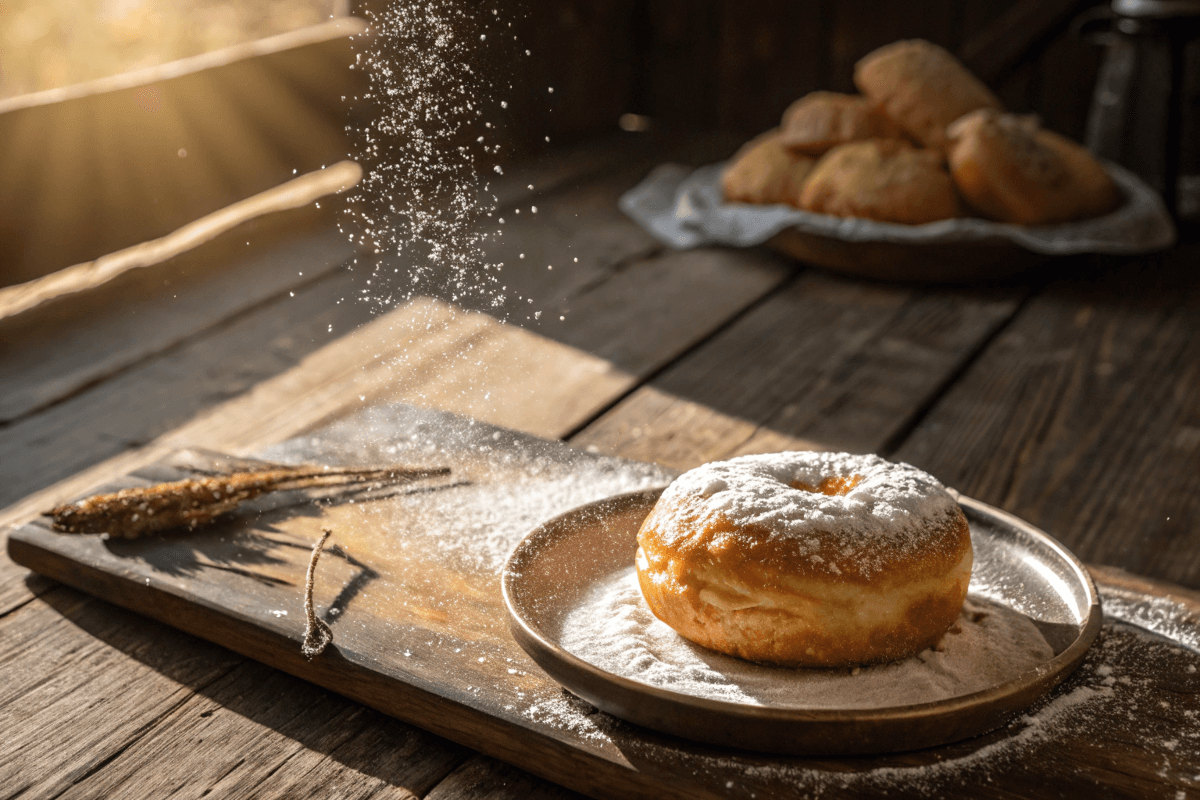Fried dough is a universally loved treat, found in various cultures under different names. Whether it’s the fluffy beignets of France, the crispy fry bread of Native American heritage, or the golden delights of fairgrounds, fried dough is a timeless indulgence. This article will explore everything you need to know, from its essential ingredients to how to make it at home, along with popular variations and FAQs. By the end, you’ll be ready to whip up your own batch of delicious fried dough!
Introduction to Fried Dough
What is Fried Dough?
Fried dough is a simple yet delightful snack made by deep-frying a basic dough until it turns golden and crisp on the outside while remaining soft and airy on the inside. Often topped with powdered sugar, cinnamon, honey, or savory additions like cheese, this treat is as versatile as it is satisfying. You’ll find it at fairs, carnivals, and street markets, drawing crowds with its enticing aroma.
Brief History of Fried Dough
The origins of fried dough trace back centuries, with various cultures developing their own versions. In the United States, it’s a staple at state fairs, where it’s often called elephant ears or funnel cakes. In Italy, zeppole is a beloved variation, while Native American communities enjoy their unique take, called fry bread. Each version carries its own history, from celebrations of abundance to symbols of cultural heritage.
Fried dough’s charm lies in its simplicity, yet its history and global appeal make it a fascinating subject. Next, we’ll dive into the essential ingredients that make this treat so irresistible.
Essential Ingredients for Fried Dough
Flour: The Base of Fried Dough
Flour is the foundation of fried dough. Most recipes call for all-purpose flour due to its balanced protein content, which provides the perfect structure for a soft yet chewy texture. Some variations, like Native American fry bread, use self-rising flour for a slightly different consistency. For added flavor, you might even experiment with whole wheat or pastry flour.
Water or Milk: Liquid Components
The liquid in your dough binds everything together, making it easier to knead and shape. Water is the go-to choice for a lighter dough, but milk adds a richer flavor and helps achieve a golden-brown crust. If you’re lactose-intolerant, almond or oat milk works as great substitutes without sacrificing taste.
Yeast or Baking Powder: Leavening Agents
Leavening agents are what give fried dough its signature puffiness. Yeast is common in recipes like beignets or pizza dough, requiring a bit of time to rise. On the other hand, baking powder is quicker, perfect for last-minute cravings. Whichever you choose, both ensure a fluffy, airy texture.
Salt: Enhancing Flavor
A pinch of salt can make all the difference! Not only does it enhance the flavor, but it also balances the sweetness of your toppings. Be careful not to overdo it, though—a little goes a long way in fried dough.
Oil: For Frying
The type of oil you use significantly impacts the flavor and texture. Vegetable, canola, or peanut oil are popular choices due to their high smoke points and neutral taste. Properly heated oil ensures your dough fries evenly, producing that irresistible crispy exterior.
Types of Fried Dough Recipes
Classic County Fair Fried Dough
This version of fried dough is a fairground favorite, often dusted with powdered sugar or drizzled with honey. The dough is rolled thin and fried until golden, creating a light, crispy treat that’s perfect for sharing.
Italian Zeppole and Pizza Fritte
In Italy, fried dough comes in several delightful forms. Zeppole are small, round, and often filled with cream, while pizza fritte offers a savory twist, topped with tomato sauce, cheese, or anchovies. Both are quintessential Italian street foods.
Native American Fry Bread
Rich in cultural history, fry bread is a staple in Native American cuisine. Made from a simple mixture of flour, water, and salt, it’s fried to perfection and typically served with savory toppings like beans and cheese or sweet options like honey and powdered sugar.
French Beignets
Beignets, a staple in New Orleans, are square pieces of yeast dough, deep-fried until fluffy and golden. They’re generously coated with powdered sugar, making them a perfect companion to a hot cup of coffee or chicory.
How to Make Fried Dough at Homes
Preparation of the Dough
The first step in making fried dough is preparing the perfect dough. Start by combining the essential ingredients for fried dough: flour, a pinch of salt, and your chosen leavening agent (yeast or baking powder) in a large mixing bowl. Gradually add water or milk while mixing to form a soft, pliable dough. Knead the dough for 8–10 minutes until it’s smooth and elastic, then cover it with a damp cloth and let it rest for about an hour if you’re using yeast.

Shaping and Cutting Techniques
Once the dough has rested, divide it into smaller portions. Roll each portion into a flat, even circle or rectangle, about ¼ inch thick. You can also get creative with shapes—rings, strips, or even fun custom designs work well for fried dough. Just make sure the pieces are uniform in thickness to ensure even frying.
Frying Process: Tips for Perfect Results
Heat oil in a deep frying pan or pot to around 350°F (175°C). Carefully place the dough pieces into the hot oil, frying one or two at a time to avoid overcrowding. Cook each side for about 1–2 minutes until golden brown. Use a slotted spoon to remove the fried dough and drain excess oil on paper towels. Keep an eye on the oil temperature—it’s crucial for achieving a crispy exterior and fluffy interior.
Serving Suggestions and Toppings
Serve your fried dough warm and freshly made for the best experience. Popular toppings include powdered sugar, cinnamon sugar, honey, or even chocolate sauce for a decadent twist. For a savory option, try topping it with grated cheese, garlic butter, or fresh herbs. The possibilities are endless!
Common Variations and Flavors
Sweet Variations: Cinnamon Sugar, Honey
When it comes to sweet fried dough, cinnamon sugar is a classic choice. Simply toss the freshly fried pieces in a mixture of cinnamon and sugar while they’re still warm. Another timeless favorite is drizzling the dough with honey, which adds a subtle sweetness without overpowering the natural flavors.
Savory Twists: Cheese, Garlic Butter
For those who prefer savory flavors, fried dough offers plenty of opportunities to experiment. Sprinkle freshly fried dough with grated Parmesan or mozzarella, then bake briefly to melt the cheese. Alternatively, brush the dough with garlic butter and garnish with chopped parsley for a fragrant and flavorful snack.
For more delicious recipes and inspiration, explore our Pumpkin Sourdough Bread Recipe. You’ll love the combination of comforting flavors and crispy textures!
FAQs About Fried Dough
What is the difference between fried dough and funnel cake?
Although fried dough and funnel cake are often found at fairs and carnivals, they are quite different. Fried dough is made from a solid dough, rolled out, and fried in flat or round pieces. Funnel cake, on the other hand, is made from a batter that is poured into hot oil through a funnel in a swirling pattern, creating its signature lacy texture. Both are delicious, but fried dough tends to be thicker and chewier, while funnel cake is lighter and crispier.
Can I make fried dough without yeast?
Absolutely! If you’re short on time or prefer a quicker recipe, you can skip the yeast and use baking powder instead. This leavening agent gives the dough a slightly different texture, but it still produces a light and fluffy fried dough. For those wondering what are the ingredients for fried dough in yeast-free recipes, they include flour, baking powder, salt, water or milk, and oil for frying.
How do I store leftover fried dough?
To keep leftover fried dough fresh, wrap it tightly in plastic wrap or store it in an airtight container. You can reheat it in the oven at 350°F (175°C) for a few minutes to restore its crispiness. However, fried dough is best enjoyed fresh, as its texture tends to change when stored for too long.
What are some healthy alternatives for frying?
If you’re looking to make fried dough a bit healthier, consider air frying or baking instead of deep frying. Air fryers use significantly less oil while still providing a crispy exterior. Baking, although oil-free, may not deliver the same golden crunch but is still a tasty alternative.
Conclusion
In this article, we’ve explored the essentials of making fried dough, from its core ingredients to unique variations and tips for achieving the perfect texture. Whether you prefer sweet toppings like cinnamon sugar or savory twists like garlic butter, fried dough is a versatile snack that caters to every craving. Now that you know what are the ingredients for fried dough and how to prepare it, you can create this delightful treat in your own kitchen. Try it today and bring a little fairground magic to your home!
Creative Ways to Serve Fried Dough
Pairing Fried Dough with Sweet Sauces

Fried dough takes on a new level of indulgence when paired with sweet sauces. Chocolate ganache, caramel, or a simple fruit compote can transform a humble treat into a gourmet dessert. Drizzle the sauce over warm dough or serve it on the side for dipping. Whether it’s a rich chocolate sauce or a tangy berry coulis, the contrast of flavors enhances every bite.
Savory Serving Ideas for Fried Dough
For a savory twist, fried dough can be topped with marinara sauce and mozzarella for a pizza-like snack, or even sliced avocado and poached eggs for a unique breakfast dish. Another crowd-pleaser is turning fried dough into mini sandwiches—stuffing them with pulled pork, grilled vegetables, or even spicy chicken. No matter how you serve it, knowing what are the ingredients for fried dough allows you to experiment endlessly with flavors and textures.
Tips for Perfecting Your Fried Dough Every Time
Maintain the Right Oil Temperature
One of the keys to perfect fried dough is keeping the oil at the correct temperature. Ideally, aim for 350°F (175°C). If the oil is too cool, the dough will absorb excess grease, resulting in a soggy texture. On the flip side, overheating can burn the dough before it cooks through. A kitchen thermometer is a handy tool for keeping the oil just right.
Use Fresh Ingredients for the Best Results
Freshness matters, especially when it comes to achieving the best flavor and texture. Always use fresh flour and high-quality oil for frying. If your recipe calls for yeast, ensure it’s active to help the dough rise properly. By using fresh, quality ingredients, you’ll not only answer what are the ingredients for fried dough but also ensure your results are consistently delicious.
With these tips in mind, you’re ready to create fried dough that’s crispy, fluffy, and utterly irresistible every time! Let your creativity shine and enjoy experimenting with this classic treat.

